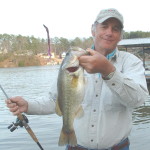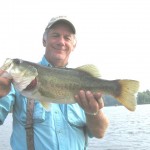Fishing the L-28 in South Florida
by Ron Brooks
Way out the Tamiami Trail (US41) about 40 miles west of Miami is a small canal. It was dredged almost due north into the everglades into the cypress head county. Islands of cypress trees on slightly higher ground are sitting in a sea of grass and water that runs about two feet deep. It is the original and unspoiled everglades.
When you hit the 40 mile bend, the road turns northwest. Dixie Webb’s old place was there and we had some of the finest count45ry ham and eggs breakfast feasts I ever ate over the years. About two miles farther on the trail, a canal takes off to the north into the glades. It’s a small canal and if you plan to launch a boat, it will have to be a canoe or kayak or small Jon boat, because there is no ramp there. You had to drop the boat over the guard rail on the highway, between the big Australian pine trees. We had a 12 foot Jon and a fifteen horse motor on this trip in 1977.
The canal was dug and the fill was placed on the east side of it as a dike for about 8 miles north into the glades. Then the canal just stopped. But the dike kept going, because for some reason they started digging on the east side of the dike. We would drag the boat out and over the dike and launch it in the new canal, which ran for many miles back into the interior of the glades.
I’m not sure why these two canals were dug. A story I once heard said they were for access for an oil drilling exploration. There have been several attempts to find oil in the glades, and this may have been an accurate story. Whatever the reason, it left a couple of canals full of fish and not many fishermen.
I was fishing with a good friend from North Carolina and up until noon, we had caught literally zero fish. It was summer; it was hot; and, the fish were simply not interested in anything we had to offer.
At 2PM on the button, it was as if someone turned on a light switch. The area we had fished for the past 8 hours suddenly turned on. When I say turned on, I mean catching a bass on every cast. Without exaggeration, we could cast 5, 6 or 7 times in a row and catch a bass every time!
The whole thing lasted for about an hour, and just as if someone turned the switch off, they quit. We released all of them; most were in the one or two pound category. The biggest was a tad over 7 pounds and was the poorest bass I had seen in a long time. If he had a full belly he would easily have topped ten pounds.
We caught them on a grape/firetail worm. That’s all we fished with back then. In my world it was unheard of to have a huge tackle box and more than one rod and reel. We had two outfits, and a couple of bags of Mann’s grape/firetail worms. Toward the end we were using a lighter to heat up worm pieces and glue them together to make one we could fish with!
We caught 62 bass in that one hour span – as fast as we could get a line in the water. And after they quit, we never had another strike for the rest of the day. I had never seen anything like it before and have never seen anything like it again.
I’ve fished that canal dozens of more times over the years, and had some awfully good days. In the fall, we would take shotguns with us. We ran out to where one of the big cypress heads was close to the dike. In the early dawn we waded out to the east and shot wood ducks and teal. Then we fished for a while. After the sun got a bit higher we would get out of the boat on the west side where the land was a bit dryer. We took our guns and walked some muddy swamp buggy trails and shot our limit of snipe – yes, Margaret the real deal snipe, like a Southern woodcock – before noon. Sometimes in the late afternoon we would roost a couple of wild turkeys in a cypress head and return the next morning before dawn to shoot one when he flew down from the roost. I’ve watched a small herd of deer swim across the canal on more than one occasion. I’ve watched and fed wild otters in the canal. They would hang around the boat – not too close – and wait for you to pitch a fish up on the bank or the dike. And, of course I have counted alligators in the canal as far as the eye could see. But I never, ever had a day of fishing like the one on that day!








